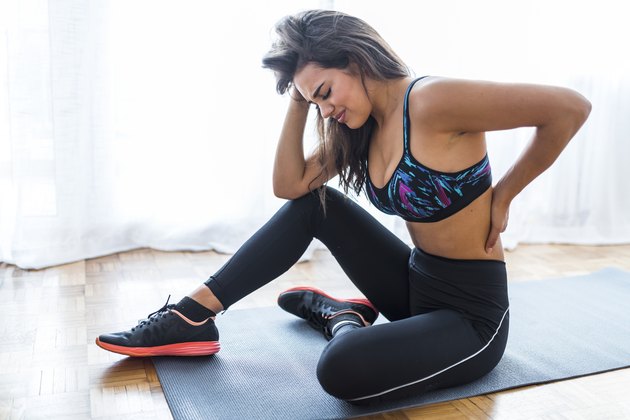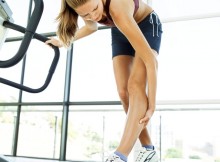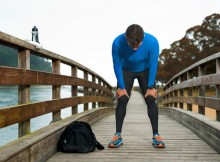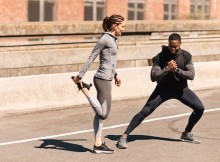5 Common Workout Injuries and How to Avoid Them
Advertisements
Don't have enough rest, do too much too fast, excessive repetitive movements and daily wear and tear will lead to sports injury, which will affect your fitness plan. In fact, a study of college athletes published in the Journal of athletic training in 2017 found that overuse injuries (usually caused by repetitive movements in sports and exercise) accounted for nearly 30% of all injuries. Factors such as lack of rest and repeated exercise will increase the risk of injury. (picture: dragana991 / iStock / gettyimages) inflammation, systemic stress and tendinitis are the most common overuse injuries. However, high-speed, whole-body contact exercise often leads to acute injury. Although you may not be able to deal with anyone in the gym, you may still be at risk of injury. Here are some of the most common situations, how they happen, and tips on how to stay safe. these small hairline fractures usually occur on the bones of the foot, heel or tibia, usually due to excessive movement or repeated jumping, said Luga Podesta, MD, a sports medicine expert at the Institute of Orthopaedics and sports medicine in Podesta. One of the common symptoms of stress fractures is pain and / or swelling around when exercising, standing or walking. Sports such as basketball and tennis increase the risk of stress fractures, as does osteoporosis. If not treated, stress fractures may not heal normally and lead to chronic pain. How to keep safe: step by step. John P. Higgins, MD, director of exercise physiology at the Herman memorial at the Texas Medical Center, says exercise should not exceed 5 to 10 percent a week. For example, if you jog 10 miles a week, don't exceed 11 miles next week. If you do 10 50 pound curls this week, 11 50 pound curls next week or 10 55 pound curls next week. Cross training also helps. Advertisements how to stay safe: if you're a cyclist, make sure the seat height is right - not too high or too low," trobridge said. In the indoor cycling class, ask the instructor to help you adjust the height of the seat and find the right position to put your torso in the ideal position. You want to be able to get to the bar without feeling curled up, she says. Runners should do a short walk warm-up before running and make sure to replace worn shoes. (professional tip: if you can't see the pattern of your sole, it's time to change your shoes!) Avoid running on concrete, if you're running on the track, change direction regularly. 1. Stress fractures
2. It band syndrome (ITBs) is very common in runners and cyclists. It occurs when the IT band (a ligament extending from the hip to the tibia from the outside of the thigh) becomes tight and inflamed. Dr Cindy Trowbridge, an associate professor of sports biology at the University of Texas at Arlington, said riding a bicycle can cause this sudden pain, which can lead to lateral knee pain. This can also happen to runners who wear worn shoes, run on uneven roads, go downhill or run too many miles. "
3. Biceps tendinitis pain in the anterior and upper arm of the shoulder may be a symptom of tendinitis, an overuse injury that usually occurs in repetitive movements such as lifting weights or swimming. Tendinitis of biceps brachii refers to the tendinitis of the upper biceps brachii muscle attached to the shoulder bone. Impact and rotator cuff injury are often associated with biceps tendon inflammation, said Dr David Geier, a plastic surgeon in Charleston, South Carolina. I will feel pain and tenderness in the front of my shoulder, which will worsen with the elevation of my head. Pain may also move down the upper arm bone, and you may feel an occasional bump in your shoulder. How to keep safe:
cross train by changing your activity to avoid repetitive head exercises. Make sure you have enough rest time between strength exercises to avoid back-to-back training for the same muscle group. Check your posture, which increases the risk of bicep tendinitis, Dr. Gail said. For example, in the process of a heavy bench compression, the loss of control over dumbbells or barbells will lead to the tearing of pectoralis, a serious injury. &"You'll feel like you're crying, and your chest and upper arms will often turn black and blue," Dr. Gail said. &Sometimes muscle defects are visible or palpable. 'you should see a plastic surgeon within a few days to see if the injury requires surgery,' Dr. Gail said. How to be safe: make sure you can control the weight of your weightlifting. &If you try to lift a heavy object, send an observer to help control it so that you don't fall or lose control. Dr. Gail said the tear may be a symptom of a tear in the glenoid lip of the shoulder, a tear in the cartilage bumper surrounding the glenoid lip, the socket of the ball joint. Dr. Gail said the tear may have been caused by overuse or direct shoulder injury, such as falling and falling on an extended arm. How to keep safe: may not be able to prevent tearing of the lips, but any uncomfortable bursting or pain deep in the shoulder is worth it. Check out. If the pain doesn't improve, consult an orthopedic surgeon to determine the cause and treatment. &Dr. Gail said the exercise was modified to avoid pain. &Even if you have to avoid specific shoulder or chest exercises, you can still get good shoulder or chest exercises. " Advertisements




